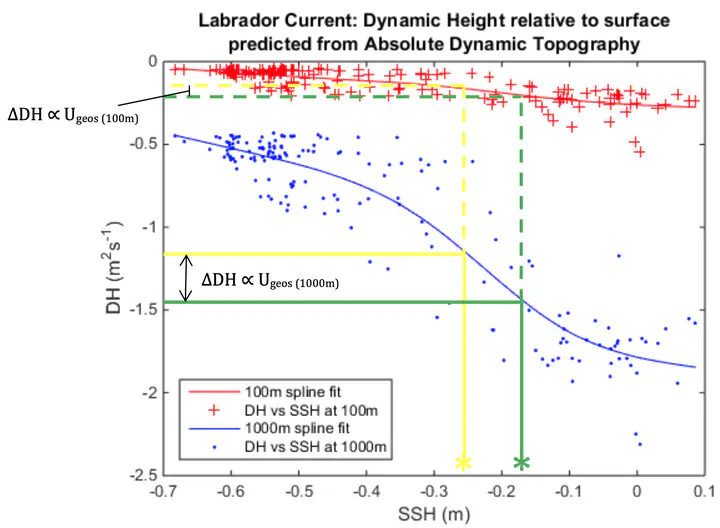 Fig 14b. Spline fits used to determine DH from SSH at the depths of 100m and 1000m (both relative to the surface) along the AR7W-North section.
Fig 14b. Spline fits used to determine DH from SSH at the depths of 100m and 1000m (both relative to the surface) along the AR7W-North section.Abstract
Mesoscale eddies are effective large-scale stirrers which provide a crucial connection between mean flow scales, such as those in the Labrador Sea (LS) boundary currents, and small scale dissipative processes. The relationship between currents and mesoscale eddies is not straightforward, however, as currents have the potential to both produce and disintegrate eddies. This study uses altimetric and AR7W hydrographic data to estimate mixing lengths and relative lateral eddy diffusivities in the LS in order to determine whether there is suppression of mixing by the LS boundary currents. In the West Greenland Current (WGC) across AR7W, a poor relationship is identified between an altimeter-derived inverse suppression factor and both mixing length (R = 0.4769, p = 0.0335) and relative lateral eddy diffusivity (R = 0.2293, p = 0.3309). This is interpreted as evidence for unsuppressed mixing. A close relationship is found between surface Eddy Kinetic Energy and both mixing length (R= 0.9598, p < 0.0001) and relative lateral eddy diffusivity (R =0.9918, p < 0.0001) in the WGC. Due to the weak tracer gradient across isopycnals stemming laterally from the Labrador Current, results are robust only in one cross section which crosses the WGC. Nonetheless, this study makes a first quantification of mixing length and eddy diffusivity across a LS boundary current.